OpenAI and Vertex AI are two of the most influential forces in the artificial intelligence sector, each backed by giants in the tech industry.
OpenAI, with its pioneering GPT AI models, is well known for its cutting-edge language processing and generative AI capabilities. Conversely, Google’s Vertex AI offers a platform aimed at demystifying the process of developing, deploying, and managing AI machine learning models at scale.
- OpenAI: Best for advanced natural language processing and generative AI tasks.
- Vertex AI: Best for leveraging machine learning model development and deployment.
Continue reading to get an in-depth understanding of how OpenAI and Vertex AI compare across their pricing, core features, implementation, and approach to generative AI.
Featured Partners: AI Software
OpenAI vs. Vertex AI at a Glance
| OpenAI | Vertex AI | |
|---|---|---|
| Pricing | Pay-as-you-go. Contact for quote. | Pay-as-you-go. Contact for quote. |
| Core features |
|
|
| Ease of implementation | Straightforward. | Steeper learning curve but user-friendly AutoML. |
| Integration capabilities | Flexible API for various applications. | Seamless with Google Cloud services. |
| Unique offerings | Advanced natural language understanding and generation for diverse applications from conversational AI to content creation. | 130+ tools and models for generative AI, including text, chat, and code generation, at competitive pricing points. |
To see a list of the leading generative AI apps, read our guide: Top 20 Generative AI Tools and Apps
TABLE OF CONTENTS
OpenAI Overview
OpenAI is a leading generative AI company that offers a suite of models for artificial intelligence applications.
From its versatile GPT-4 that’s popular for its creative and collaborative capabilities in writing and editing to the visually imaginative DALL-E, OpenAI’s products are meant to enhance a wide range of creative and technical tasks. This sums up OpenAI’s popularity in sectors reliant on nuanced language generation, such as creative writing, customer service automation, and educational content development.
Key Features
- GPT (Generative Pre-trained Transformer): OpenAI’s flagship model, GPT, excels in understanding and generating human-like text. Its latest iteration, GPT-4, performs well on a range of tasks from writing and editing to engaging in detailed discussions. Deep contextual comprehension is where GPT outshines its competitors, which makes OpenAI’s generative AI model a great consideration for content creation, customer service automation, and even coding.
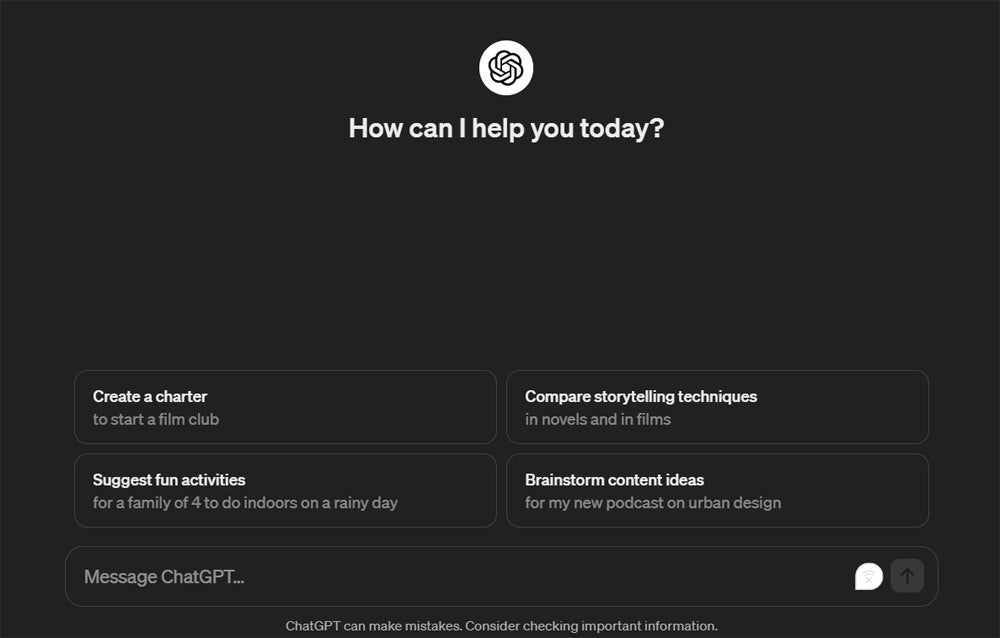
- Text-to-image: OpenAI’s image generation model, DALL-E, can create original, high-quality images from textual descriptions. This has disrupted creative industries, marketing, and design, as it has democratized visual content creation and stands out from its competitors due to its seamless integration with ChatGPT, meaning you can easily generate images mid-chat.
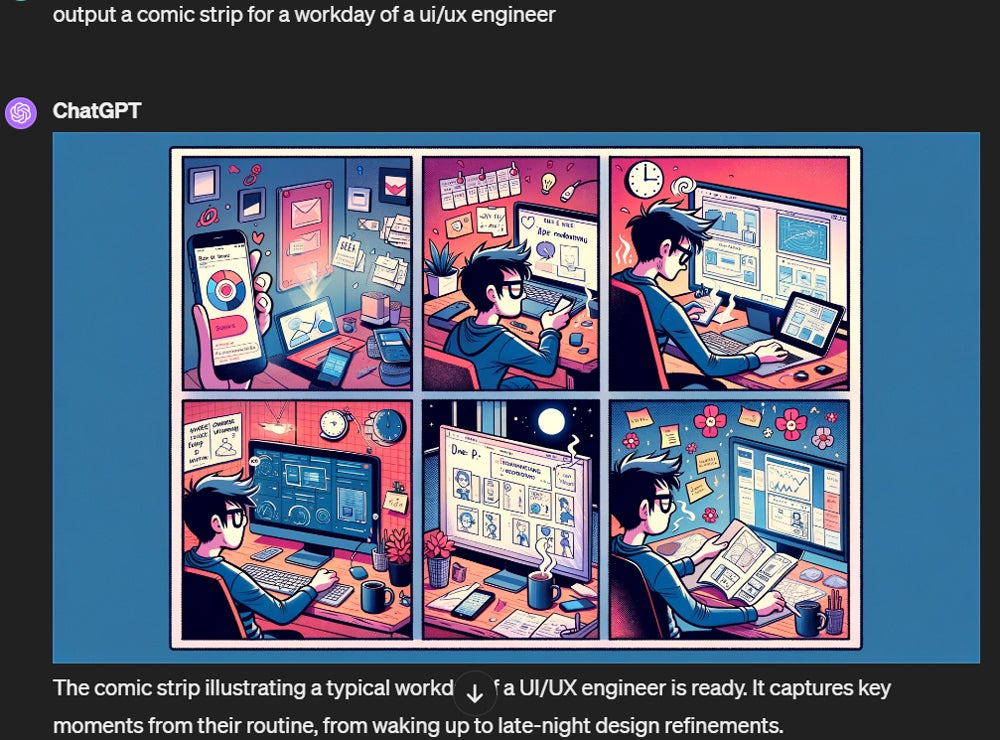
- Speech to text: Whisper is OpenAI’s speech-to-text solution for transcription and language translation. It can not only transcribe but also identify and accurately translate many languages. This gives it straightforward use cases in enabling global communication, content accessibility, and multimedia content production.
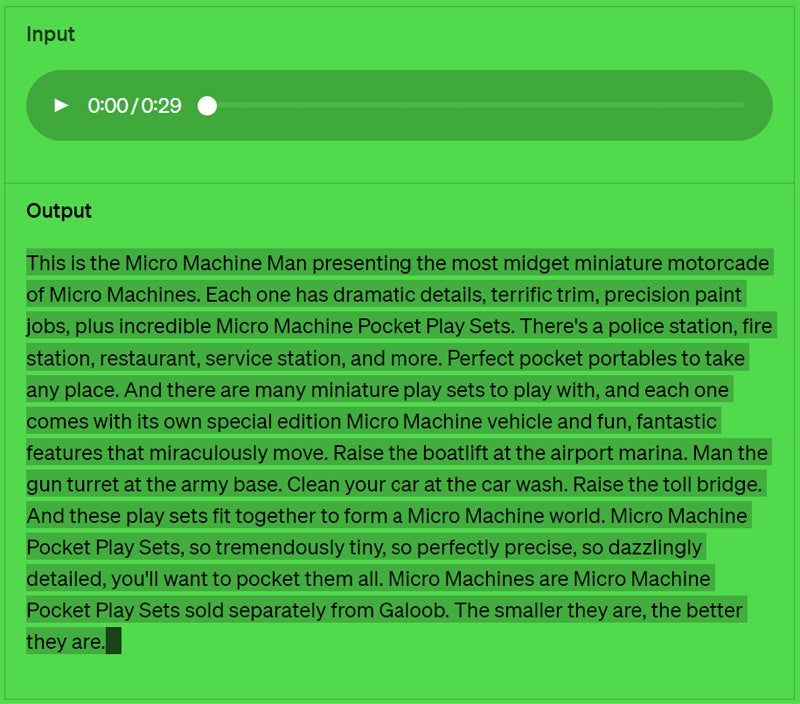
- Text-to-video capabilities: Open AI, through its latest model Sora, enables its users to create realistic video scenes from text input. These videos can run up to a minute long, maintaining visual fidelity all throughout.
- OpenAI developer platform: This platform is a gateway for developers to capitalize on everything OpenAI’s models have to offer. It provides comprehensive resources, tutorials, and API documentation, facilitating the integration of AI functionalities into various applications.
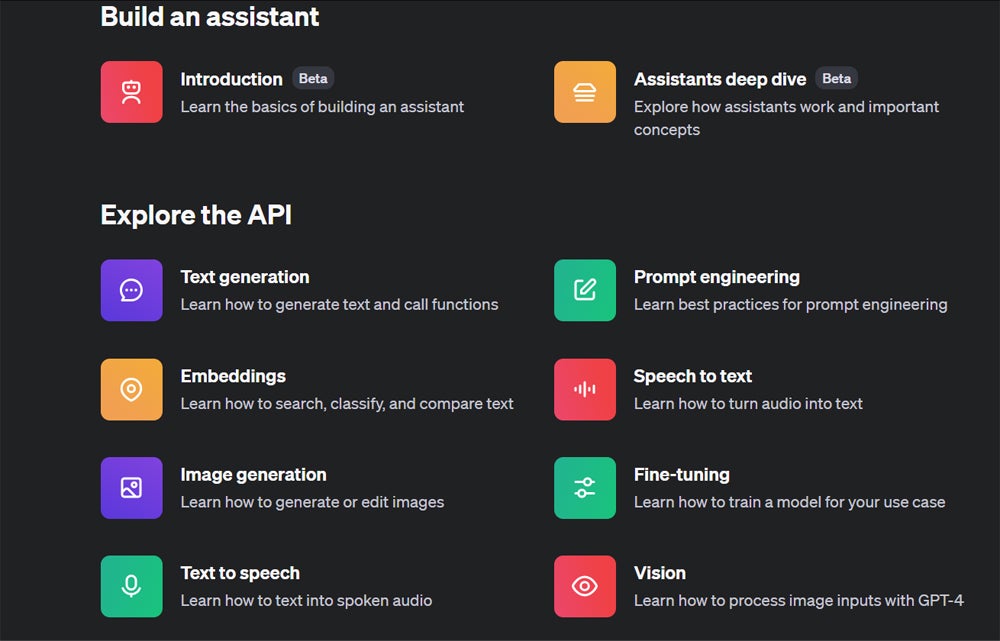
Pros
- Unmatched in natural language understanding and generation.
- Its models are effective in a vast range of applications.
- Continuous innovation and improvements and updates to models.
Cons
- Usage costs can escalate with extensive API calls.
- Products like DALL-E and ChatGPT can widely miss the mark of user prompts.
- The advanced capabilities of its products introduce a learning curve for optimal use.
For more information about generative AI providers, read our in-depth guide: Generative AI Companies: Top 20 Leaders
Vertex AI Overview
Developed by Google Cloud, Vertex AI is a machine learning platform that brings together Google’s most advanced AI models and tools. It’s designed to cater to a wide range of AI applications, from simple automations to complex multimodal systems.
Additionally, Vertex AI’s AutoML features allow users with limited machine learning expertise to leverage Google’s AI technology effectively. It also provides a reliable infrastructure for seasoned AI developers to build custom models, all while ensuring seamless integration.
Key Features
- Gemini multimodal models: Vertex AI introduces Gemini, Google’s most capable multimodal models, which excel in processing and generating outputs from diverse inputs like text, images, video, or code. Companies in the fields of media, entertainment, and e-commerce can take advantage of this AI-as-a-service approach with Gemini for tasks like content creation, customer engagement, and product recommendation systems.
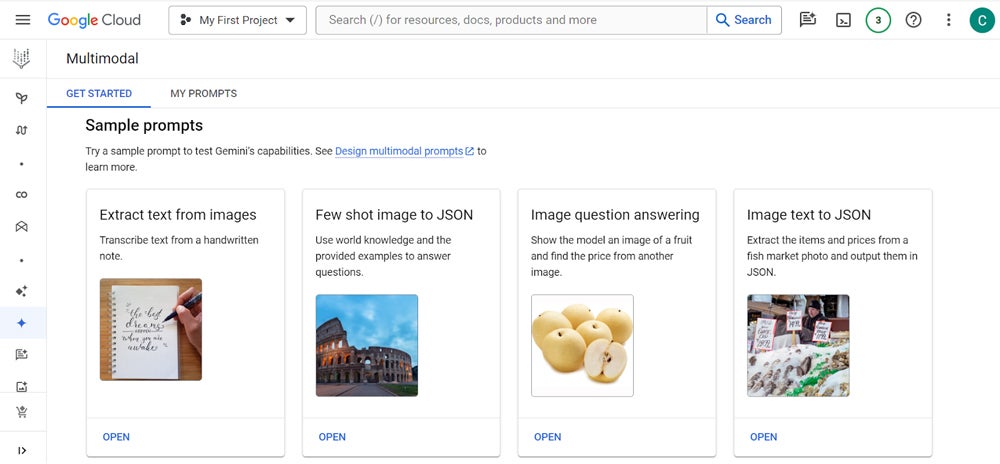
- Generative AI models and tools: Vertex AI boasts an incredible selection of over 130 generative AI models and tools, with first-party models like PaLM API and Imagen, third-party models such as Anthropic’s Claude 3, and open models like Gemma and Llama 2. This extensive library, available in Model Garden, allows for extensive customization and application-specific tuning.
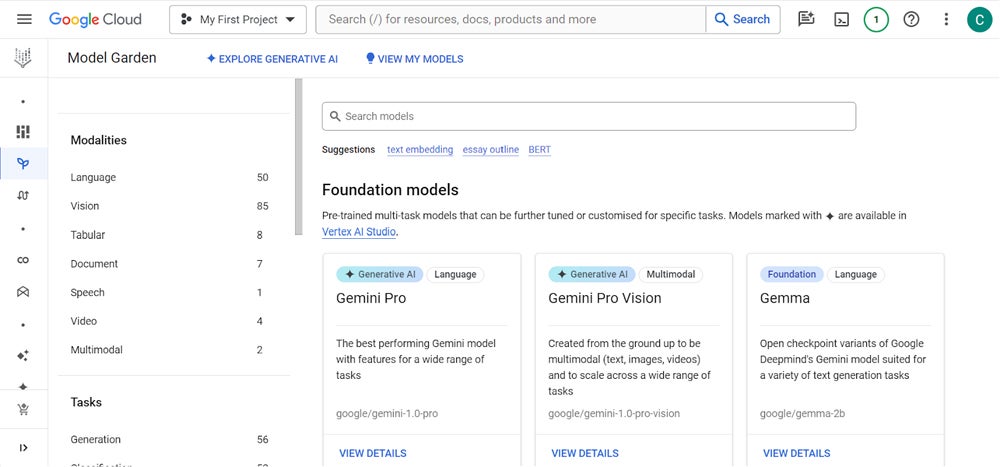
- Open and integrated AI platform: Vertex AI facilitates rapid development cycles for data scientists with integrated tools for training, tuning, and deploying ML models. The platform’s strength is how extensive it is, with notebooks that are compatible with Colab Enterprise or Workbench and offer seamless integration with BigQuery to streamline workflows across data and AI tasks.
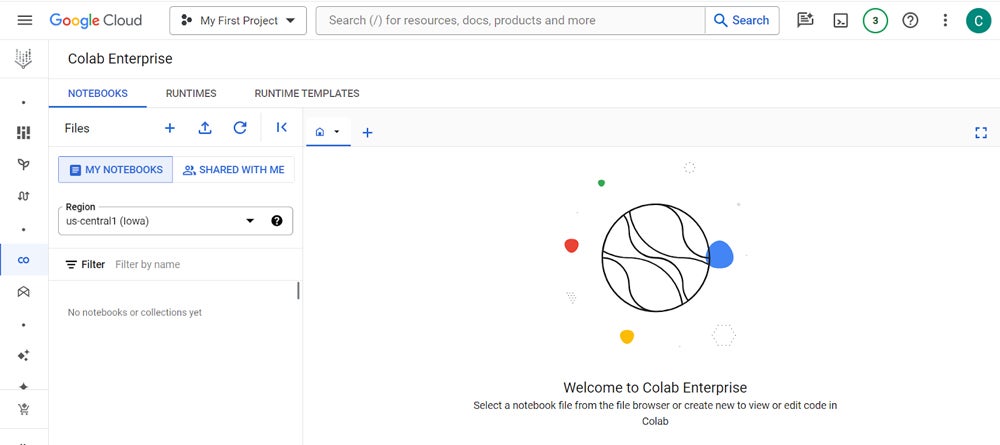
- MLOps for predictive and generative AI: With Vertex AI, you get purpose-built MLOps tools designed to automate, standardize, and manage ML projects throughout their lifecycle. Features like Vertex AI Evaluation, Pipelines, Model Registry, and Feature Store support collaboration, model optimization, and operational efficiency. Enterprises that must maintain high standards of model performance and efficiency will love this feature.
- Search and Conversation: Vertex AI Search and Conversation makes it easy to develop and deploy generative AI-powered search and AI chatbot applications. It offers an orchestration layer that abstracts complexity, coupled with enterprise-ready data privacy and controls. What it does better than any other alternative is combining enterprise data with Google search and conversational AI.
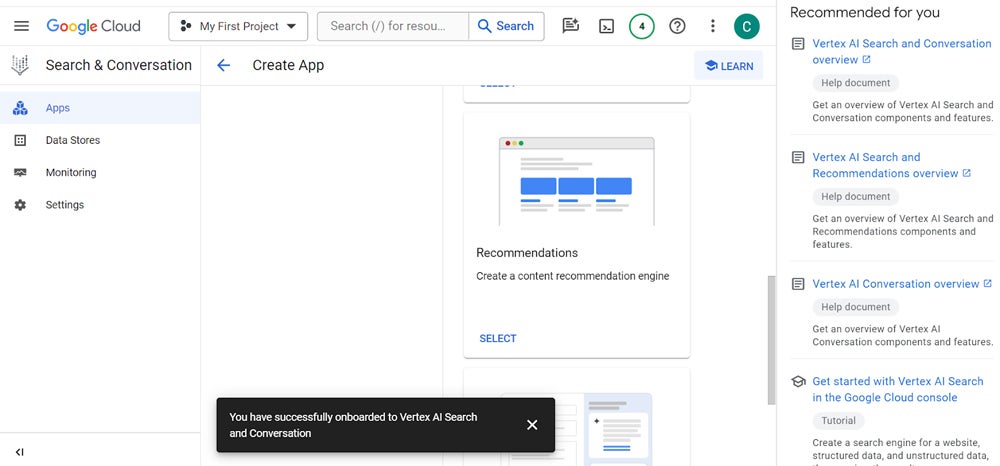
Pros
- An unmatched variety of over 130 generative AI models.
- Advanced multimodal capabilities.
- Seamless integration with Google Cloud services.
Cons
- The platform’s wide array of features can overwhelm beginners to AI and machine learning.
- Deep integration with Google Cloud may limit flexibility for users of other cloud ecosystems.
- Gemini AI model has frequently given biased responses.
Best for Pricing: Vertex AI
When comparing pricing, OpenAI offers a tiered model based on usage, which is great for projects with predictable workloads, as well as a pay-as-you-go approach for flexibility and scalability.
Vertex AI also gives a pay-as-you-go structure that’s particularly beneficial for larger or more variable projects. Each has its merits, but I prefer Vertex AI’s model when it comes to better cost control for diverse and scaling AI needs. Additionally, Google gives new Google Cloud users $300 in free credits to try out the platform.
Best for Core Features: Vertex AI
This is a close one and is dependent on your perspective. If we’re talking purely natural language processing capabilities, OpenAI still has an unassailable lead, with its advanced natural language processing capabilities, especially with GPT-4’s ability to generate, edit, and iterate on a wide range of writing tasks.
On the other hand, if we’re looking at a roster of capabilities within a single platform, Vertex AI easily boasts a broader suite of generative AI tools, including AutoML, MLOps, and multimodal models like Gemini, with a more dense platform for diverse AI applications. Additionally, for core AI features, Vertex AI’s extensive toolkit provides a more versatile solution for complex AI projects.
I was impressed by how much is packed into the Vertex platform and how easy it is to get started. But it’s worth noting that less technical users may feel overwhelmed by Vertex’s platform.
Best for Ease of Implementation: OpenAI
OpenAI’s API is known for its ease of use and straightforward integration. It’s easy to get started with and use, as can be seen with the seamless integration between products like ChatGPT and DALL-E.
Vertex AI, while offering powerful tools like AutoML and integrated ML workflows, may present a steeper learning curve due to just how expansive a platform it is. It is, however, easy to integrate with other Google Cloud services, but OpenAI’s more contained and more focused approach makes it much more straightforward to implement.
Best for Generative AI: OpenAI
For generative AI applications, particularly those involving sophisticated text and image generation and creative content creation, OpenAI is the superior choice. GPT-4 has outstanding language understanding and generation capabilities and is currently unparalleled in crafting coherent, contextually relevant, and creative outputs, even though it’s still prone to mistakes.
OpenAI’s position here is also cemented by recent controversies concerning bias in Gemini AI’s outputs. Gemini recently cooked up a storm around the accuracy of its AI image generation and questionable political responses, raising questions about the training and validation procedures of the model.
Best for Accessibility and Developer Support: OpenAI
I prefer OpenAI’s vast and accessible developer support. With a wide range of resources, from detailed documentation to community forums and responsive support, OpenAI through its developer platform gives developers the guidance they need to successfully implement and leverage its AI models.
Who Shouldn’t Use OpenAI or Vertex AI
Both OpenAI and Vertex AI are platforms actively shaping today’s generative AI landscape, but they might not be the perfect fit for every user or scenario.
Who Shouldn’t Use OpenAI
OpenAI, particularly known for its GPT models, may be far from ideal for organizations that need highly specialized AI solutions outside of natural language processing and generative tasks. It might not suit those with stringent data privacy and security requirements, especially in sectors like healthcare and finance where data sensitivity is paramount. Small businesses or individuals with limited budgets may also find the cost-prohibitive for large-scale or continuous use.
Who Shouldn’t Use Vertex AI
Vertex AI, with its comprehensive suite of machine learning solutions and tools and integration within the Google Cloud ecosystem, might overwhelm small teams or individual developers looking for simpler, more straightforward AI solutions. Organizations not already invested in the Google Cloud platform may find the transition and integration process challenging.
Additionally, businesses seeking a more cost-effective solution for sporadic or low-volume AI tasks might not fully benefit from the breadth of features Vertex AI offers, which makes it less suitable for their needs.
3 Best Alternatives to OpenAI & Vertex AI
Jasper AI
Jasper AI is made for content creators, as it provides a suite of over 30 generative AI tools for campaigns, brand voice, chat, art, security, and languages. Unlike OpenAI and Vertex AI, which cater to a broader range of AI applications, Jasper AI focuses on enhancing content creation, making it a specialized tool for marketers, writers, and creative professionals seeking AI-assisted content generation.
Bloom AI
Bloom AI offers AI-driven solutions focused on enhancing productivity through task automation and decision insights. Unlike broader AI platforms like OpenAI and Vertex AI, Bloom AI zeroes in on optimizing business processes and decision-making with its subscription-based GenAI co-pilots and analytical APIs.
Azure Machine Learning
Azure Machine Learning sets itself apart from OpenAI and Vertex AI by offering a deeply integrated environment within the Microsoft ecosystem. Unlike OpenAI, which specializes in natural language processing and generative AI, Azure ML provides a broader range of machine learning tools and a strong focus on MLOps. This makes it more like Vertex AI but more inclined to the Microsoft ecosystem as it offers its users a cohesive experience with services like Azure DevOps, Azure Data Lake, and more.
How We Evaluated OpenAI vs. Vertex AI
Our evaluation of these two AI heavyweights was based on the scope of the respective platforms, core features, pricing, and intuitiveness.
- Scope of services: We assessed how wide and how deep each platform goes with its AI services, tools, and products, from natural language processing to machine learning model development.
- Core features: As they are very different platforms to each other, we compared the advanced capabilities of each platform, such as OpenAI’s GPT models for text generation and Vertex AI’s vast model multimodal models.
- Pricing: Pricing is a big deal for any commercial product, therefore, we inspected the pricing structures offered by the platforms, noting that they both deliver pay-as-you-go plans.
- Integration: We analyzed how each platform integrates with existing infrastructures.
- User experience: Finally, we considered the ease of use of each product, based on our experience with their user interfaces, setup processes, and learning curves, plus feedback from other users of each of these platforms.
Bottom Line: OpenAI vs. Vertex AI
Although OpenAI and Google are both leading AI software companies, choosing between them will be based on a couple of questions. Do you want an extensive catalog of features and tools geared to anything and everything machine learning? Or would you prefer a much more focused tool, centered around natural language processing and generative AI?
Should it be a yes to the first question, Vertex is the obvious choice. But should the second question get a yes out of you, then OpenAI should be your choice. Ultimately, whatever you choose will be dependent on your use case.
For a full portrait of the AI vendors serving a wide array of business needs, read our in-depth guide: 150+ Top AI Companies
